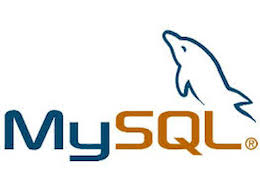
In this tutorial, we will show you how to install MySQL on CentOS 9 Stream. For those of you who didn’t know, MySQL is an open-source free relational database management system (RDBMS) released under GNU (General Public License). MySQL is used for data warehousing, e-commerce, and logging applications, but its more commonly used feature is a web database storage and management.
This article assumes you have at least basic knowledge of Linux, know how to use the shell, and most importantly, you host your site on your own VPS. The installation is quite simple and assumes you are running in the root account, if not you may need to add ‘sudo‘ to the commands to get root privileges. I will show you the step-by-step installation of the MySQL database on CentOS 9 Stream.
Prerequisites
- A server running one of the following operating systems: CentOS 9 Stream.
- It’s recommended that you use a fresh OS install to prevent any potential issues
- A
non-root sudo useror access to theroot user. We recommend acting as anon-root sudo user, however, as you can harm your system if you’re not careful when acting as the root.
Install MySQL on CentOS 9 Stream
Step 1. First, let’s start by ensuring your system is up-to-date.
sudo dnf clean all sudo dnf update
Step 2. Installing MySQL on CentOS 9 Stream.
By default, MySQL is available on the CentOS 9 Stream base repository. Let’s install the MySQL server using the following command below:
sudo dnf install mysql mysql-server
Verify MySQL installation:
mysql --version
Once the installation is complete, now enable MySQL (to start automatically upon system boot), start the MySQL, and verify the status using the commands below:
sudo systemctl start mariadb sudo systemctl enable mariadb sudo systemctl status mariadb
Step 3. Securing MySQL.
By default, MySQL is not hardened. You can secure MariaDB using the mysql_secure_installation script. you should read and below each step carefully which will set a root password, remove anonymous users, disallow remote root login, and remove the test database and access to secure MySQL:
mysql_secure_installation
Configure it like this:
- Set root password? [Y/n] y - Remove anonymous users? [Y/n] y - Disallow root login remotely? [Y/n] y - Remove test database and access to it? [Y/n] y - Reload privilege tables now? [Y/n] y
If you’d like to connect to MySQL and begin adding data to it, run the following command below:
mysql -u root -p
Congratulations! You have successfully installed MySQL. Thanks for using this tutorial to install MySQL on CentOS 9 Stream. For additional help or useful information, we recommend you check the official MySQL website.